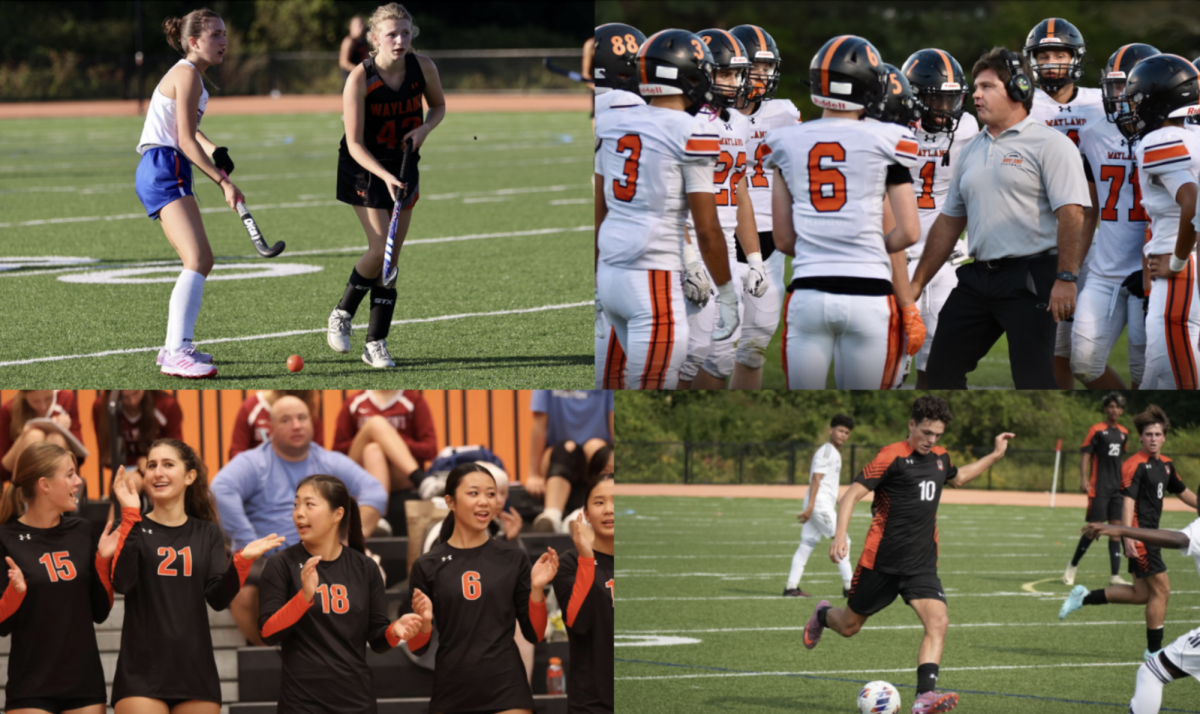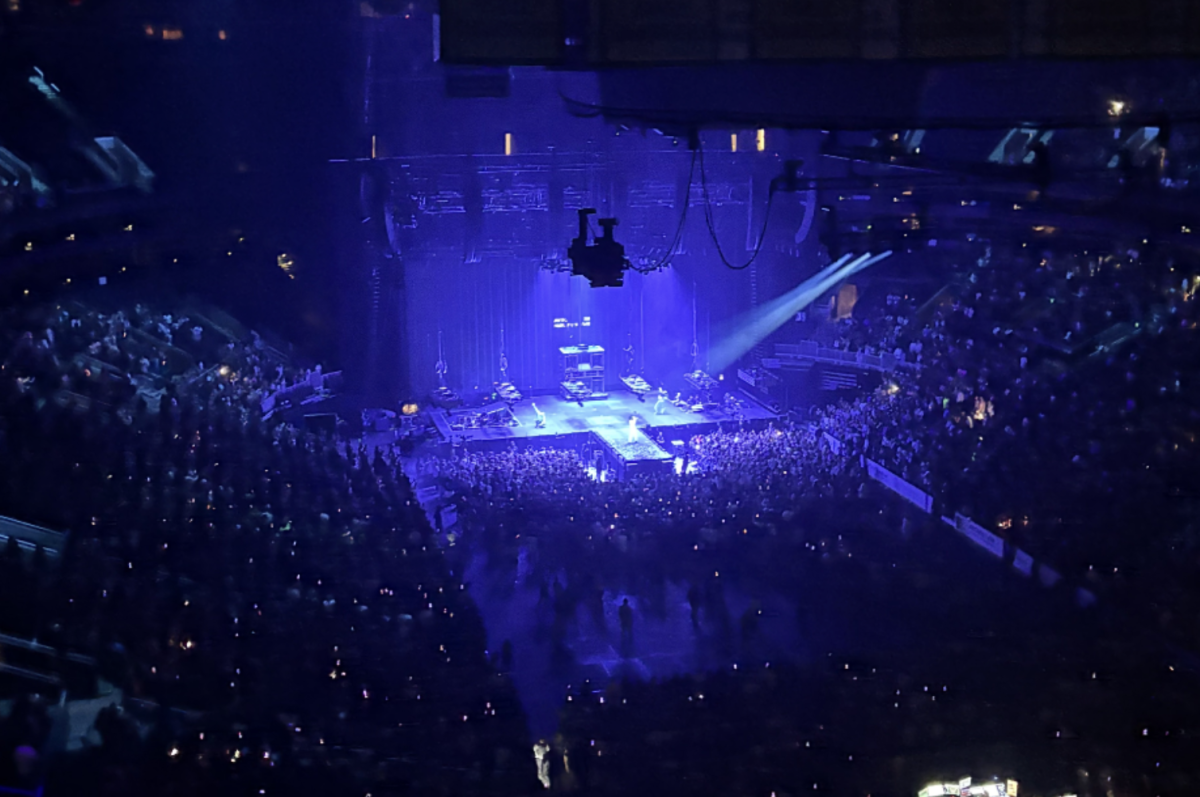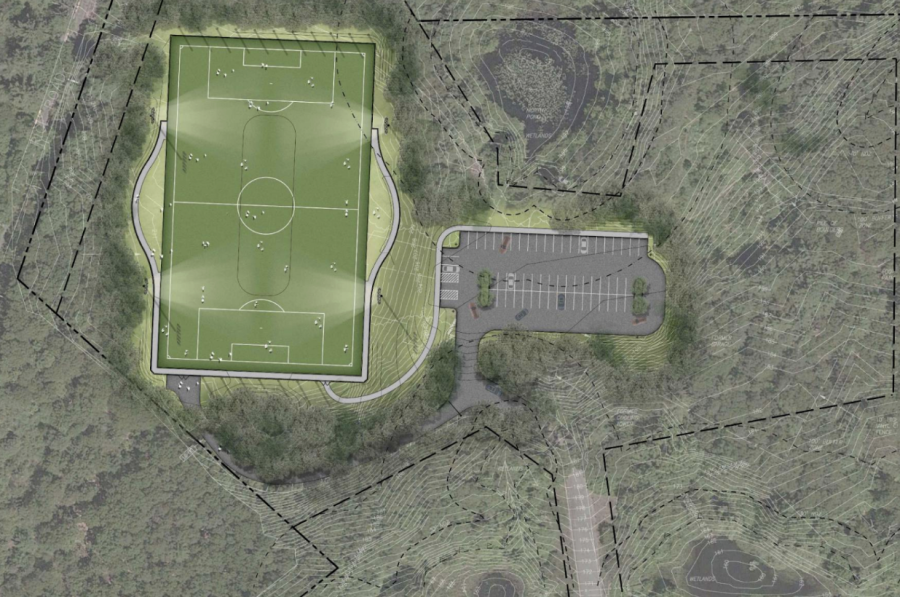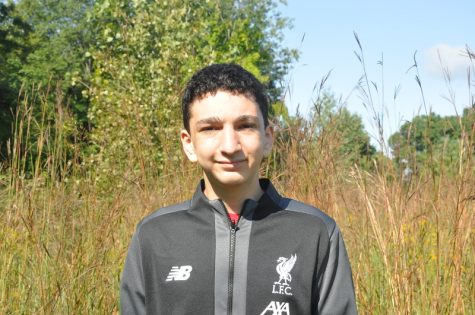Loker fields back in the spotlight with town meeting vote
Credit: Courtesy of the Town of Wayland
The Wayland Recreation Department plans to build a new field in the Loker Conservation and Recreation Area. The fields will be discussed during the town meeting on May 14.
May 7, 2022
After a moratorium banning turf fields was set in order in October of 2021, the push for a new grass field in the Loker Conservation and Recreation Area has returned. There will be a vote held on election day, May 10 and at the town meeting on May 14.
The project, estimated to cost over $3 million, will bring a new place for people of all ages to hone their skills for soccer, lacrosse and more. With the lack of fields in Wayland, many view a new one to be a high priority for the town.
“The usage of fields in Wayland is overwhelming, not just [for] the kids, but adults as well,” Wayland Recreation Commission Co-Chair Asa Foster said. “We clearly need these additional fields. Some people might say ‘oh, well you rent out the fields to out of town people.’ That used to be the case, we used to rent out maybe 10% of our fields. Today, virtually none of our fields are rented to out of town groups.”
Usage demands are not consistent and tend to become a problem at specific times of the day and during certain months of the year.
“We don’t have enough field capacity now to satisfy that [demand],” Wayland resident Paul Dale said. “Kids in our school system are increasingly interested and want to play many different kinds of sports, and we just have not been able to provide the playing surfaces that they need for that.”
The decision between turf and natural grass for the fields is one of the most important choices for a new field. After multiple attempts to build a turf field over a few years, a moratorium was introduced by Dale. The moratorium aimed to ban turf field construction in Wayland for at least three years and passed in October limiting the choice to exclusively grass fields.
“I was the principal speaker at the special town meeting at which the moratorium was passed,” Dale said. “The principal reason I undertook that was out of concern about climate acts. Artificial turf fields have a significant climate and environmental impact. In the modern world, where we understand those risks far better than we have ever understood them in the past, it seems incongruous with where and what we need to be headed as a town, as a nation, as a society. The moratorium gives us the time and the space to build, understand and demonstrate for ourselves a successful natural grass field.”
The decision for natural grass isn’t clear cut either, with grass requiring more maintenance than turf, especially with specific activities.
“There are some activities that are greater wear-and-tear on the field,” Foster said. “Football is a sport that is hard on grass fields, [and] soccer is still hard but less hard. Also, the age of the folks that are performing on the field matters.”
The fields, which are expected to get between 600 and 1000 hours of use per year, can be used for many different sports.
“[The field] can be used for any sport that uses a rectangular field, such as lacrosse, soccer or [flag football], as well as workouts for baseball and softball,” Foster said. “For game usage, it’ll be primarily used for soccer and perhaps lacrosse.”
Eighth grade town soccer player Ved Acharya believes that simply adding to the field pool won’t fix all of the existing problems surrounding the fields.
“People keep having votes for turf fields but what they first need to do is make the regular fields [level] and good to play on,” Acharya said.
Foster, however, believes that approving the field at the annual town meeting on May 14 at 12:30 p.m. is currently the best solution to the problem of fields in Wayland.
“I think it’s critical that this field gets approved at [the town meeting],” Foster said. “You can take an existing field offline, but that doesn’t solve the inventory problem we have as far as recreation is concerned.”



























Kathryn Cardy • Apr 17, 2023 at 1:46 PM
Hi. I am noticing construction now on this site. Would you write an update article, please? Thanks.